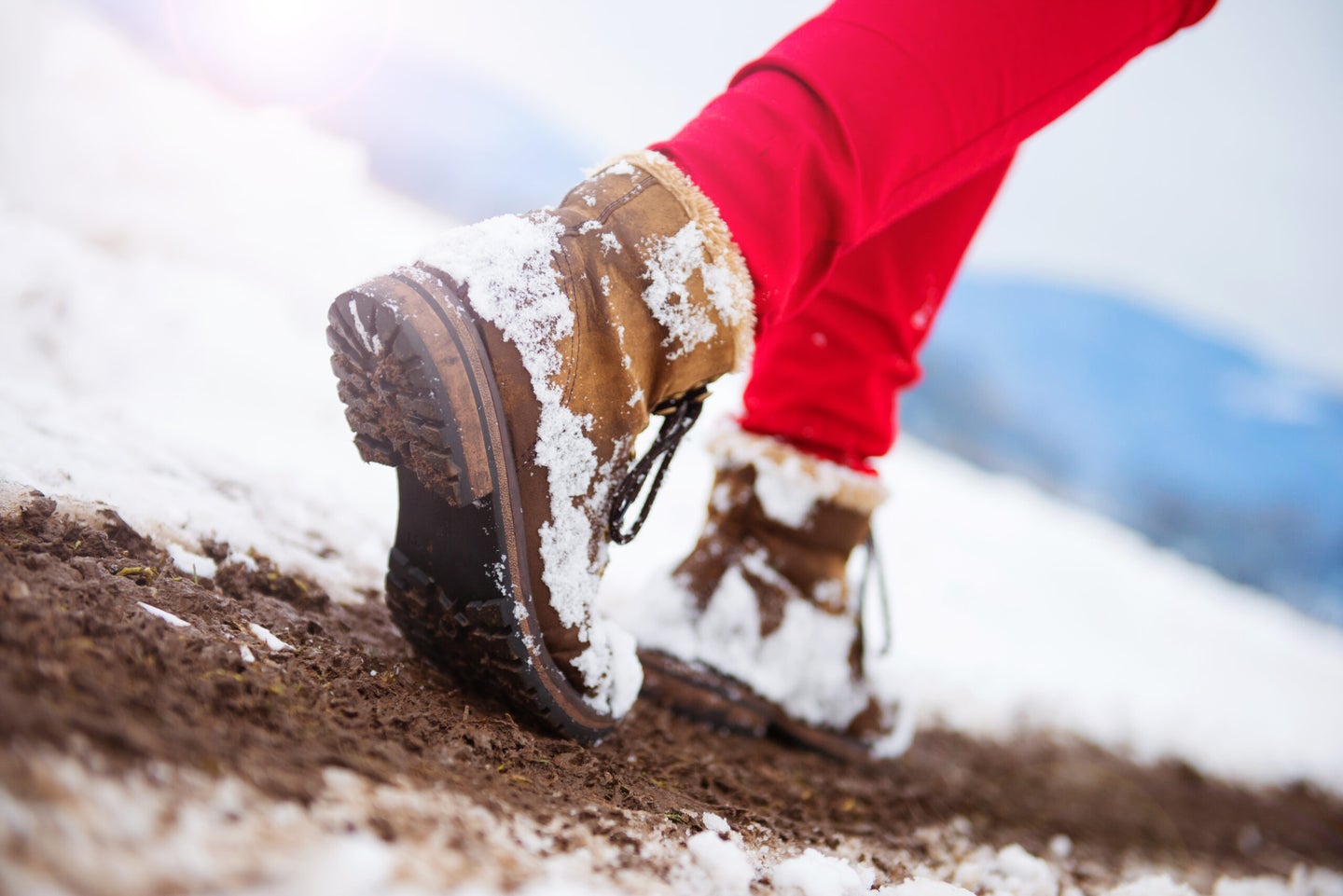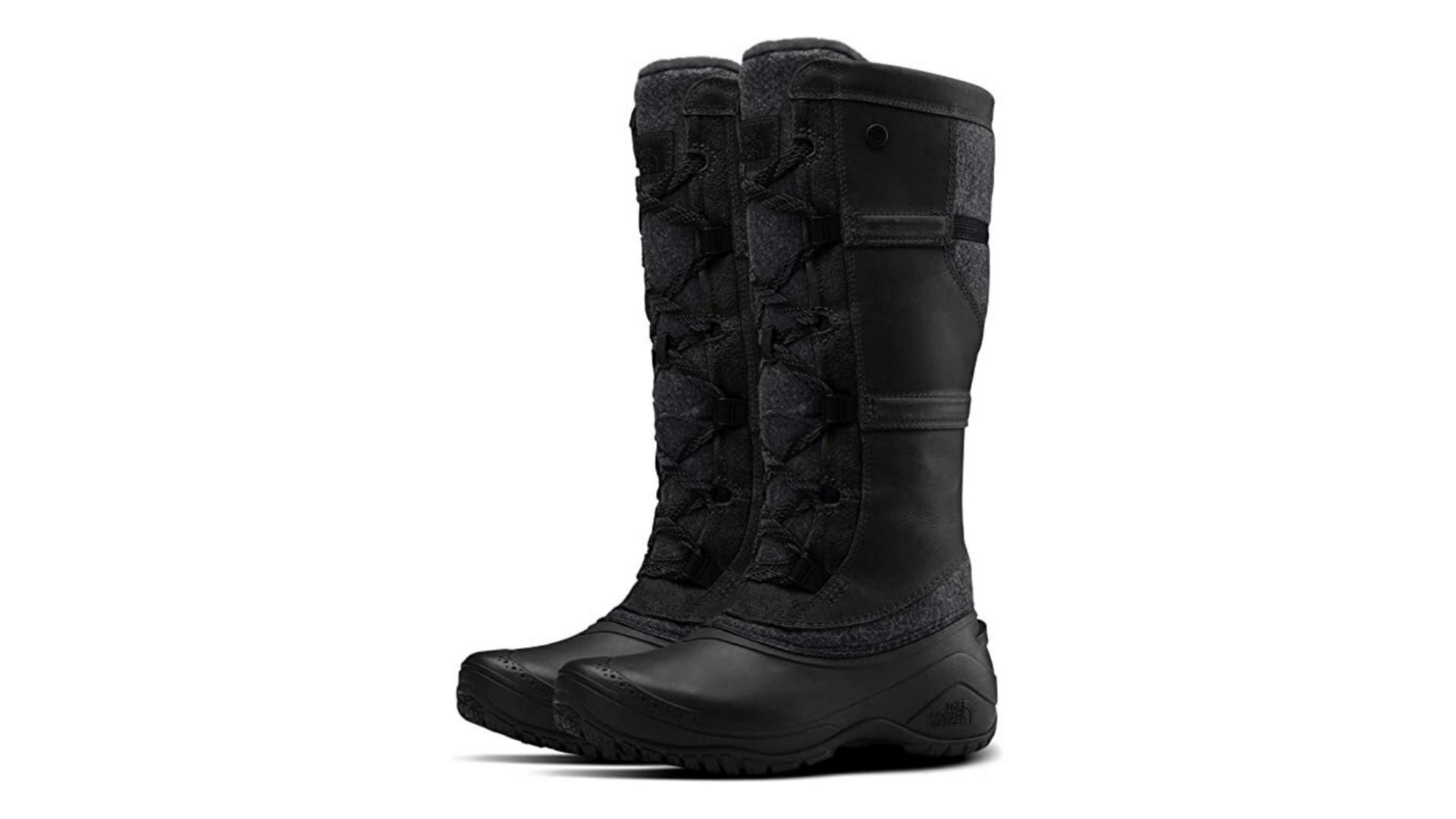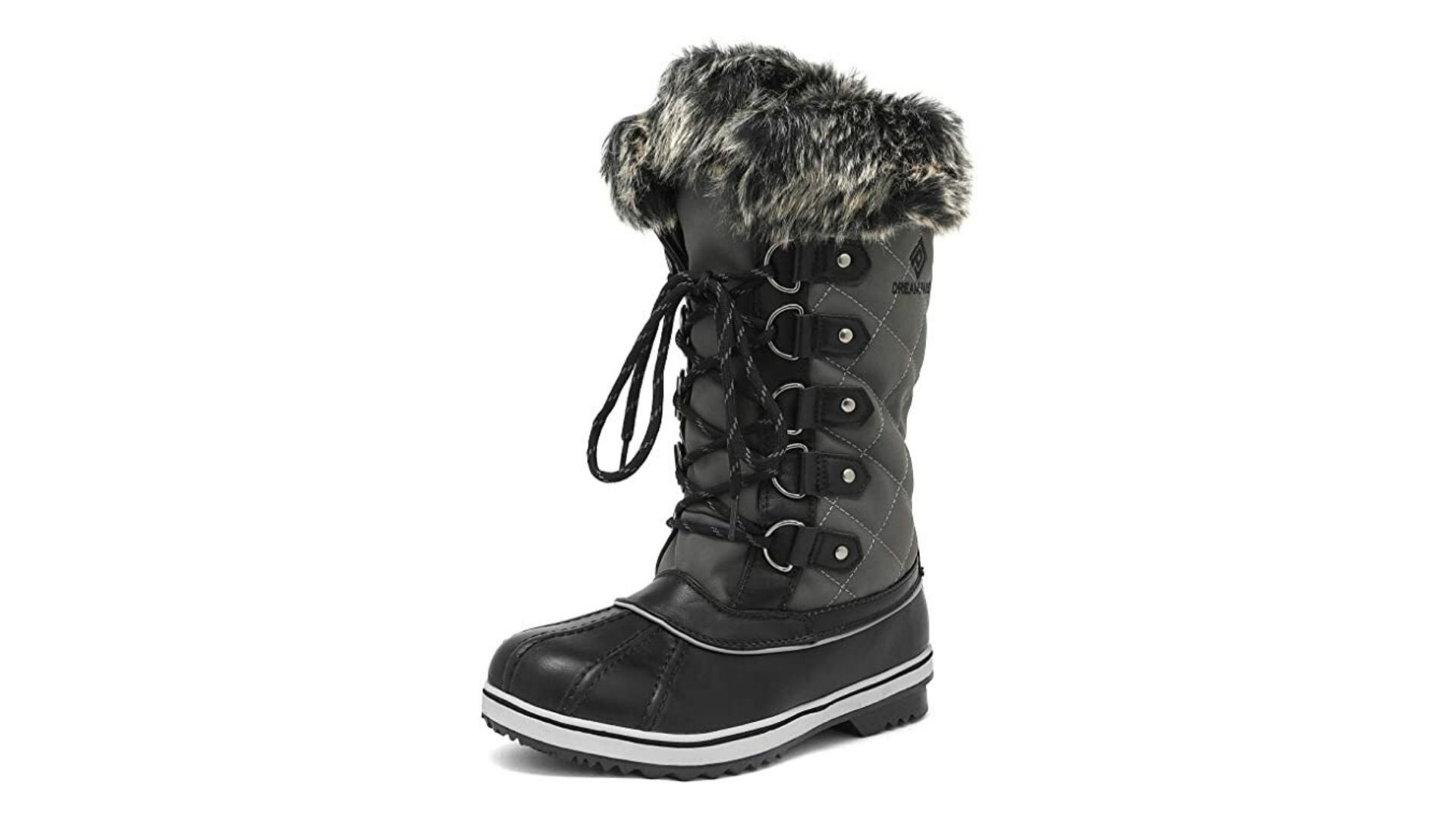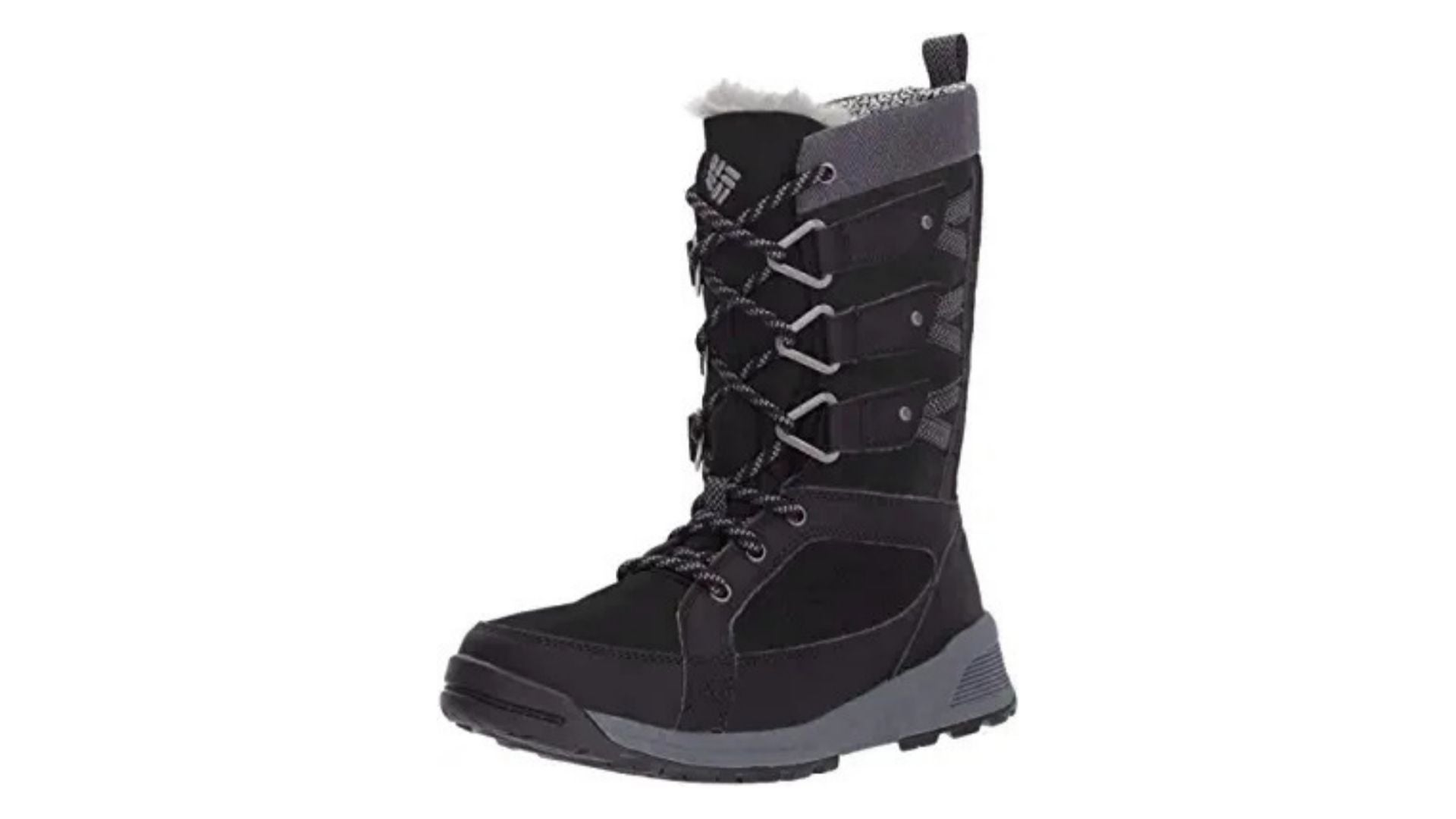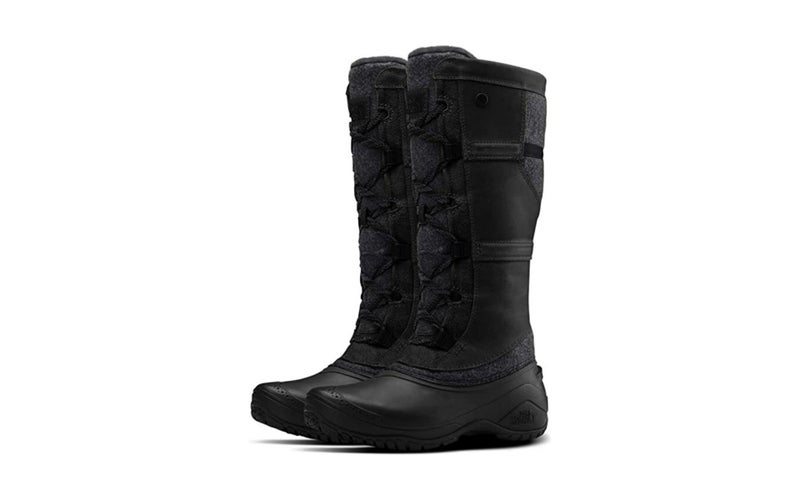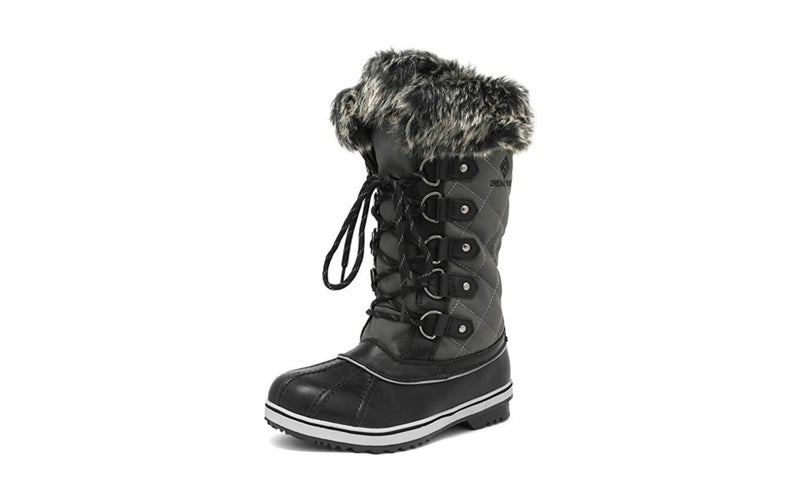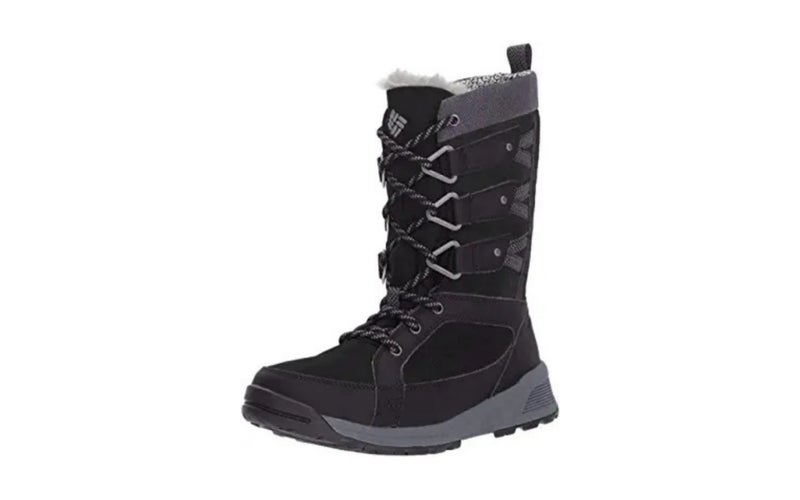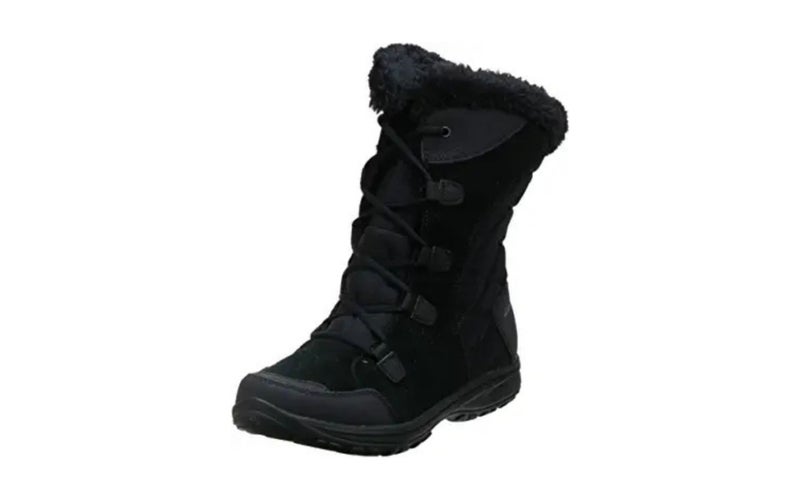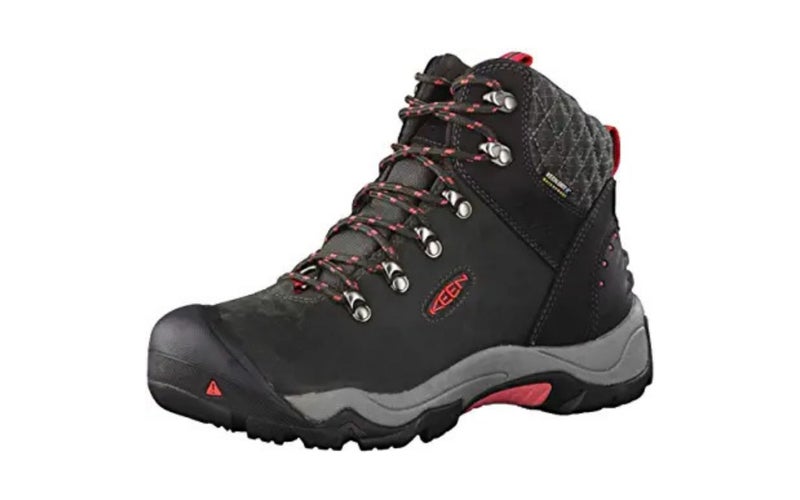We may earn revenue from the products available on this page and participate in affiliate programs.
After slogging around with wet, cold feet for four days on the Appalachian Trail after a freak March snowstorm dropped a foot of snow in Pennsylvania, I became a firm believer in investing in a pair of the best snow boots for women. It was a sustained level of misery I had only ever experienced during Marine Corps training, where my fellow Marines and I were often equipped with gear that had often been around since the Vietnam War era. When I was on active duty, I knew that this type of misery was just part of the package; now that I am retired, however, I am not willing to sacrifice my comfort and safety for bragging rights.
Our feet are critical to our comfort in frigid temps. Because they have so many blood vessels, the warmer our feet are, the greater circulation and blood flow we have throughout the body, making it much easier to regulate our body temperature. Whether you have to crunch through ice, snow, and slush just to walk your dog, or you have plans for an extended adventure in the great outdoors, a good set of the best snow boots for women will prevent your feet from turning into frozen blocks of ice and ensure your winter experience doesn’t turn into a big suck fest.
What makes for a trusty pair of snow boots? To take the mystery out of finding a pair that will work for your winter needs without breaking the bank, we tested a variety of snow boots to bring you the best the shoe world has to offer at a variety of price points. Here’s what our research and testing revealed.
The ultimate in warmth thanks to the fully fleeced interior, tall height, and thick outsole, the North Face Shellista IV is the epitome of not having to sacrifice form for function when it comes to buying snow boots. The interior includes Heatseeker synthetic insulation and 200g of PrimaLoft eco insulation made from 85 percent post-consumer recycled materials. This faux fur feels as soft as a lamb’s ear and ensures your feet, calves, and shins stay comfy and cozy through all of your snowy adventures. Despite their height and thick vulcanized rubber construction, a pair of Shellista IV boots weigh only one pound, so they won’t weigh you down.
With an outsole made from vulcanized salt-resistant, waterproof, and seam-sealed rubber, the Shellista IV’s height and fleece tongue ensure that no matter how high the drifts, no snow will permeate the interior of your boots. While my Shellistas came with red and black shoelaces, as an added bonus, they also come with a second pair of shoe laces in gray and black, proving they can not weather the winter but look darn good while doing it. Waterproof, insulated, and stylish, the Shellista’s patented IcePick traction system ensures that as temperatures drop, you’ll stay comfy and dry and you won’t lose your grip on the pavement.
- Warmth: Fully lined with a two-inch faux lambswool interior cuff and soft synthetic insulation all the way through for maximum warmth and comfort
- Traction: Proprietary IcePick rubber lugs on the tread penetrate ice and snow for excellent traction
- Waterproofing: Seam-sealed, vulcanized rubber midsole and outsole
- Fit: Flexible fit through the foot and calf with fully adjustable laces
Grippy IcePick lugs for excellent traction
Fully lined and insulated
14 inches high to prevent snow from creeping in
10 percent military discount if purchased directly
Lifetime warranty
Not breathable, which makes for sweaty cold feet over prolonged activity
At the high end of the price range
Run a full size small with wool socks on and can be hard to find due to their popularity
Yes, it’s true: You can find quality snow boots that are warm, relatively waterproof, stylish, and affordable, and the Dream Pairs Women’s Mid Calf Winter Snow Boot is here to prove it. Available in a dizzying array of color, fabric, and color options, this on-trend and fully insulated snow boot has over 7,195 five-star ratings on Amazon, and for good reason. With a purchase price of less than $50, Dream Pairs will make you look good and keep you cozy, all without breaking the bank.
But don’t confuse cheap with cheap. The low price tag doesn’t even begin to hint at the boot’s 200g of Thermolite insulation, which mimics the warmth of down feathers and wicks away moisture while being decidedly less bulky. In fact, according to the manufacturer, the boots have a minus 23 degree Fahrenheit temperature rating and molded rubber outsole for good traction, meaning that if you are wearing good socks and have plenty of toe room, you can zip through your outdoor activities with ease and without breaking the budget or your leg. And when I say zip, I really mean it, because these are the only boots we reviewed with a zip entry, making them easy to put on and take off. Short of being endorsed by the Abominable Snowman, it doesn’t get much better than that for routine outdoor winter fun.
Oh, and did I mention that these snow boots come in an incredible number of fabrics, colors, and cuff options and cost less than $50? Need I say more?
- Warmth: Thick fleece, a fully lined Thermolite interior, and faux fur cuff mean excellent warmth and comfort
- Traction: Wave pattern of rubber tread provides good traction
- Waterproofing: Seam-sealed but the zipper makes them more water-resistant than waterproof
- Fit: Run a full size small with wool socks on but adjustable laces and a zipper are a plus
At the low end of the snow boot price range
Stylish duckboot design with zipper for easy on/off
Seam-sealed for additional protection from moisture
Fully insulated top to toe
12 inches tall with a two-inch collar to prevent snow from falling into boot
Run small, order a full size up
May not be as durable as other more expensive brands
Tongue not fully integrated into the boot, allowing some moisture in
Thermolite fleece may wear out over time
While the Columbia Meadows Omni-Heat 3D Midcalf Boot reminds me a lot of the moon boots I used to have in the late 1970s (which were, of note, the epitome of cool then), what they lack in style is more than made up for in warmth, waterproofing, light weight, and traction. This is an excellent boot for everyday wear through the snow. While you may not get a lot of compliments on them, you will stay on your feet and feel warm and light as air, no matter how brutal the winter weather.
In the mid range for pricing at less than $115 a pair, the Meadows Omni-Heat is by far the most cushiony of all of the boots I reviewed, with more of a sneaker than boot feel to it, thanks to the proprietary Techlite midsole and lightweight rubber outsole. It is also one of the warmest snow boots out there thanks to Columbia’s trademarked reflective Omni-Heat interior lining, which is designed to retain the heat your feet and legs radiate. The Omni-Tech seam-sealed, breathable bootie construction adds to the feeling of warmth and comfort by wicking away moisture while repelling moisture, and is another reason the boot has a minus 25 degree Fahrenheit temperature rating.
Out of all of the boots we tested, the Columbia Meadows Omni-Heat packs in the most technology for the buck, resulting in a reasonably priced, cushiony, high traction, warm, and waterproof snow boot, with a light weight, sneaker feel.
- Warmth: Combination of 200g insulation, seam-sealed interior bootie, and proprietary reflective interior fabric create exceptional warmth
- Traction: Varied tread pattern made from trademarked Omni-Grip rubber make for superior gripiness
- Waterproofing: Seam-sealed interior bootie, waterproof Omni-Tech material
- Fit: Run a full size small with wool socks on
Tons of proprietary technology incorporated into boots
Excellent insulation and seam-sealed breathable interior bootie for breathability and warmth
Techlite EVA midsole produces lightweight sneaker-like feel and cushioning
Waterproof exterior materials block out the wind and elements
Late 1970s moon boot styling
Run a full size small with wool socks on
Lack of integrated tongue could compromise warmth
Short 10-inch height and no snow cuff mean possible snow infiltration
Priced at less than $80, the Columbia Ice Maiden II Snow Boot is an affordable snow boot that makes up in warmth and traction what it lacks in styling. While I am reminded of my Italian grandmother’s booties every time I look at them (and not in a good way), there is no denying that Columbia created a winner in the Ice Maiden II when it comes to designing a reliable, grippy boot for shorter-term outdoor activities like snow shoveling, walking the dog, or running errands.
Although the Ice Maiden II doesn’t have quite the bounce of its sister shoe, the Columbia Meadows, it still packs in a lot of technology, providing a lighter, more cushiony feel than many of its competitors. With its wide and rounded toe box, you will have plenty of room to wiggle your digits to promote circulation and airflow, while the lace-up closure system provides a secure fit. Columbia’s proprietary Omni-Grip rubber outsole is designed to remain soft in cold temperatures, meaning you will feel stable and secure even in icy conditions. As many reviewers have noted, the Ice Maiden II makes for a versatile pair of boots that are perfect for trekking around and doing basic chores outside in warmer winter climates, all at an excellent price point.
Although it is at the low end of the price range for snow boots, this does not mean the Ice Maiden II skimps on grippiness, cushioning, faux furriness, or warmth enhancing technology, making it a good choice for walking the dog or running errands in sketchy weather.
- Warmth: 200g of insulation and micro fleece interior
- Traction: OmniGrip rubber sole makes for great traction control
- Waterproofing: Seam-sealed bootie and waterproof fabric upper
- Fit: Runs a full size small with wool socks on
Excellent value for the money
Techlite EVA midsole and Omni-Grip rubber outsole for lightweight sure footing
Seam-sealed, waterproof and breathable interior bootie
Two-inch faux fur cuff to keep snow out, warmth in
Back height of just nine inches can make it hard to keep snow out
Slightly clunky appearance and lacks ankle support
Reminds me of my grandmother’s little old lady boots
Suede detailing on exterior isn’t fully waterproof (but the cloth upper material underneath is)
Having experienced the absolute misery of cold, wet feet after tromping through the snow for days on end, it did my heart good to be able to test KEEN’s Revel III Cold Weather Hiking Boot. With the rounded shape that KEEN shoes are known for, the Revel III’s somewhat clunky appearance actually does winter hikers a big favor by providing a roomy toe box that promotes blood circulation and heat generation. And when it comes to the warmth factor, 200g of insulation as well as insulation in the sole of the boot combined with a KEEN.Dry breathable bootie make for a snug, warm, and waterproof fit.
True to the name, the Revel III is an actual hiking boot, not a traditional snow boot. The differentiation comes in part from the height of the boot at just eight inches high. However, the Revel III boot does have a ring to attach a leg gaiter, which can prevent snow incursion and provide a water and windproof layer of protection for the legs, which makes it an awesome choice for cold weather hiking through snow. The KEEN.Polar Traction and large lugs of the Revel III mean that you won’t lose slip and slide, even in the iciest of conditions.
The Revel III is the perfect cold-weather hiking boot for when you want to get out into the great outdoors for all-day activity no matter how extreme the weather. With a list price of less than $170, you simply can’t beat the price for the Revel III’s quality, insulation, traction, and versatility.
- Warmth: 200g of insulation and micro fleece interior, plus insulated sole
- Traction: OmniGrip rubber sole, good-sized lugs, and varied traction pattern
- Waterproofing: Seam-sealed bootie and waterproof fabric upper
- Fit: Runs a full size small with wool socks on
Versatile, comfortable boot that can accommodate snow shoes, traction cleats, crampons, and leg gaiters
Insulated top to bottom for exceptional warmth and wicking
100 percent waterproof
Roomy toe box is excellent for blood circulation and toe comfort
Run true to size
Quilted upper exterior makes for a somewhat floppy fit and poor ankle support
At eight inches high, may allow for snow incursion without use of leg gaiter
Why you should trust us
I am an outdoor fanatic, and the fun doesn’t stop for me when Old Man Winter shows his ugly face. Whether summiting 14,000-foot mountains or hiking through the snowy woods, I crave being in nature all year long. In fact, last year when we had eight inches of snow in Maryland, my adventure partner and I were the first two kids on the sledding hill near our house. But having gutted through countless military training exercises wearing crappy gear in frigid and wet temps, including cold-weather training at the Marine Corps Mountain Warfare Training Center in Bridgeport, California, I’ve learned that the quality of your gear can make or break an adventure, and that while well-constructed gear is mentally and physically worth every penny, it doesn’t need to cost a pretty penny.
Types of snow boots for women
A lot of people confuse snow boots with winter boots and assume they are the very same, and while they may share some characteristics, such as traction and insulation (note the word “may” here), as the name implies, snow boots are specifically designed to get you through ice and snow safely and comfortably. All good snow boots will be waterproof, not water-resistant, and will extend above the ankle (either in height or with the help of an attached leg gator) to prevent piled-up snow from spilling inside, and the best have a form-fitting cuff made of faux fur or fleece-like material to prevent snow and create a barrier between your legs and the elements.
Temperature-rated snow boots
You can get a general sense for how warm your snow boots will keep your feet over extended periods of time in a winter wonderland by finding out if they have a temperature rating. All of the boots we reviewed are temperature-rated in a lab in order to ensure they will keep you warm and dry.
The temperature rating translates into the manufacturer’s estimation of how comfortable a boot will stay in a specific temperature range. For instance, Columbia claims that the Meadows Omni-Heat is good down to minus 25 degrees Fahrenheit, but be aware that several factors go into how warm your snow boots will be, including your metabolism, the type of socks you wear, how much wiggle room your toes have, and what the boots are made of.
Hiking snow boots
Boy, I wish I had had a pair of these last year in Pennsylvania! While there isn’t really such a thing as a hiking snow boot per se, with the attachment of a leg gaiter, a pair of insulated and waterproof hiking boots can easily keep you comfortable as you move through the snow-covered backcountry. The only drawback is that while they are waterproof, generally, leg gaiters are not insulated, which means, unlike a good tall and fully insulated snow boot, your legs will get chilled after prolonged exposure to the elements.
Fully insulated and waterproof hiking boots can extend the amount of time you can comfortably spend out in snowy and cold conditions, especially when you add leg gaiters to the mix, making gaiters a worthy $20 investment. To maximize the protection your leg gaiters provide, look for insulated boots like the KEEN Revel III that come with a gaiter ring integrated into the lacing system.
Fashion snow boots
Generally not waterproof or fully insulated, fashion snow boots are designed to be trendy and of-the-moment in terms of styling. I hesitate to even really call them snow boots, because they may not be waterproof or fully insulated, and can sometimes also skimp on providing good traction. Unless the manufacturer explicitly states their boots are waterproof and fully insulated, we tend to think of fashion boots as good to wear from the house to the car and into the store, but not for shoveling your driveway after an ice or snowstorm.
But take heart — as some of the products reviewed here indicate, you don’t have to sacrifice form for fashion when it comes to snow boots. Just be sure to make waterproofing, insulation, and traction your top selection criteria rather than how good they look!
Key features of snow boots for women
Waterproofing
If the whole point of wearing snow boots is to keep your feet warm and dry, then preventing snow, ice, and rain from getting in is paramount, making waterproofing perhaps the most important shopping criteria. In addition to potentially causing serious medical conditions such as trench foot and frostbite, wet shoes can increase your chances of getting nasty blisters and going hypothermic. When you are out in winter weather, having wet feet can not only feel unpleasant but can also lead to death.
When shopping for snow boots, pay close attention to whether the boots are water-resistant or waterproof. According to experts, waterproof boots have an interior lining or sock made of a waterproof fabric like Gore-Tex. Additionally, the outer seams of waterproof boots are generally sealed to prevent moisture from creeping in. Water-resistant boots may appear to be waterproof, but only because they have been treated with a waterproofing compound, which wears off over time.
Warmth
It stands to reason that if you are buying snow boots, it is because you want your feet to stay toasty in winter conditions, making the warmth rating the second most important factor to consider when shopping. The challenge is that even if a snow boot has a temperature rating, warmth is somewhat subjective based on individual metabolic rates and has a lot to do with the type of sock worn. The more your feet sweat and your socks don’t wick, the colder your feet will feel, regardless of the temperature rating from the manufacturer, so buying boots that are large enough to accommodate wool socks and leave enough room in the boot for your toes to wiggle around will ensure your feet feel warm and dry.
With that said, the inner construction of your snow boots is important to how warm your feet will feel. Look for snow boots that have a Thinsulate type of interior insulation and pay attention to how many grams of insulating material are on the label. Thinsulate and similar insulating materials have fibers that are small enough to trap air molecules inside the boot keeping warm air in and cold air out, and the more grams of insulation a snow boot has, the longer it will feel comfortable in even the most extreme temperatures.
Height
Why should you care about height when purchasing your snow boots? Because the higher the boot, the less likely it will be that snow will infiltrate them. Your need to pay attention to the height of your boots will largely be driven by the types of activities you plan to do in them. For instance, if you are purchasing snow boots for a vacation to an area that receives a few feet of snow every winter, chances are you are going to encounter snowdrifts and banks of snow, so higher boots are in order. But if you only plan to wear your snow boots to get your mail or walk the dog and you live in a warmer climate, ankle-high boots may be acceptable. When shopping for calf-length or taller snow boots, ensure the interior tongue, calf, and ankles of the boots are made of insulating materials to help keep your legs as warm as your feet.
Outsole
Because the bottom of your snow boot comes into direct contact with the cold ground, ensuring you purchase boots with a rubber outsole will be essential to keeping your feet warm and dry. The greater the distance between the bottom of the outsole and the boot’s midsole, the more insulation you will have between your feet and the cold ground. Look for an outsole that is at least a half-inch high and made from rubber designed to stay soft in cold conditions for the ultimate in traction.
You’ll also want to consider the actual tread pattern on the outsole to ensure your new boots will keep you steady on your feet in slippery conditions. A good pair of snow boots will have a tread pattern designed specifically to grip the ice.
Cuff
Why do I keep seeing all of those women out there wearing fancy snow boots with the fur sticking out of the top when there isn’t a flake to be found on the ground? Well, it turns out that this cuff is for way more than just fashion. A true snow boot will protect your feet from moisture creeping in, but this can be hard to do when there is a gap at the top of the boot. A good way to prevent piles of snow from dampening your fun is to ensure you select a boot that has a faux fur or fleece collar.
The cuff serves to close the gap between the leg and the opening of the boot so that snow can’t fall in. When present along with a good lacing system and boot height, you can climb through the highest of snowdrifts and still come out on the other side with dry feet.
Benefits of snow boots for women
Warm feet, warm body
I know, I know. You are probably thinking, well duh. But you may not know that having cold feet can impact your cognitive ability and your body’s overall temperature. Ever hear that expression, “cold feet, warm heart?” It’s actually a complete fallacy and is more like “cold feet, cold heart.” That’s because the body registers cold first in our fingers and toes which leads to a reaction throughout the rest of the body.
According to one expert: “When cold reaches the body, pain is signaled to the brain and our muscles start to shiver to produce heat, more than 80 percent of the available energy is sent to reheat the affected muscles. Thermoregulation plays a role, but in this case, it reduces muscular power and endurance. When these conditions arise, there is a far greater risk of injury as our muscles are directly weakened.”
Dry feet
Did you know that damp feet really do make you feel colder? As WeatherNationTV explains, “As the humidity increases in cold air, the clothing we wear to keep warm insulates less. The moisture in the fibers and the wicking effect of the clothes can accelerate the heat loss through clothing. Even though the clothes do not appear wet, the humidity in the air may create a thin layer of moisture on the fibers and result in greater conduction, or transfer, of heat through the clothing.”
This means that a good pair of snow boots with interior fabric that wick moisture away from the skin, good insulation, and seam-sealed rubber to prevent water from creeping in, can make you feel warm and dry even on the coldest of winter days.
No slipping and sliding
Want to read a sobering statistic about why you should invest in a pair of snow boots with great traction? According to the CDC, “approximately 1 million Americans are injured annually as the result of falling on ice and snow. Tragically, these injuries are fatal for about 17,000 people every year.” Great traction is especially important for people who rely on their snow boots to carry them through outdoor adventures in remote places accident-free.
I can personally vouch for how frightening it is to not be wearing boots with good traction while scrambling over boulders on the Appalachian Trail covered in snow and ice. The sheer terror of those moments not only impacted my enjoyment of the activity but also caused me to needlessly burn through calories and sweat through my clothes, negatively impacting my body’s ability to regulate my temperature. So great traction is not only good for your peace of mind but can also dramatically improve your body’s ability to stay warm.
Pricing considerations of snow boots for women
Budget
A quick search on Amazon for women’s snow boots under $80 turned up over 50 results, but just because a product is labeled as a snow boot doesn’t mean it will fully protect your feet from moisture and the cold since water-resistant and waterproof are not at all the same. With that said, it is important to note that you can find temperature-rated and waterproof boots below $60 by just being more specific with your search terms. In fact, if you live in a place where it rarely snows or freezes over, it probably doesn’t make sense to invest more than that for a good pair of boots.
Just pick a pair with good traction, insulation, and waterproofing, and you can put them in your closet ready to pull out for years to come in the event of that rare and wonderful blizzard. But if you plan on spending less than $80, don’t expect to find options from the bigger name brands like The North Face or Columbia.
Mid-range
If you are willing to spend between $80 and $150 for a good pair of snow boots, you will find that your options expand considerably and that some big-name brands like Columbia have excellent quality snow boots in this range. Some people find that purchasing products from name brands provides more peace of mind for them, especially when the product has life or death consequences.
On that note, I probably wouldn’t buy my next ice ax from Walmart, so I understand the mental comfort provided by purchasing snow boots from big-brand companies with their own patented technology and materials. The more you participate in remote winter activities like hunting, hiking, and camping, the more you might want to consider spending on a good pair of snow boots from a big name brand.
Premium
This leads me to the premium pricing category of any snow boot purchase of more than $150. To some readers, spending more than $150 may not seem like a big deal, but in this review alone we have provided several top picks priced below that range, so again, unless you plan to participate in remote wilderness activities wearing your new snow boots, you probably don’t need to spend that much. On the other hand, if you are interested in the latest proprietary insulating materials like synthetic alternatives to down or fur that boost the temperature rating of your boots, or you have a specific gear requirement like extra insulation for snowshoeing, you might want to consider spending more than $150 for your next pair of snow boots.
How we chose our top picks
Did you know that, according to the CDC, winter weather {“kills more than twice as many Americans as summer heat?” Given the horrific number of injuries reported each year due to slips and falls on ice and how cold, wet feet impact our ability to regulate body temperature, as I was researching snow boots, safety was my number one review criteria. Fashion was not a primary concern for me, although we do note that several of the brands reviewed have a trendier appearance than others.
With safety in mind, we specifically evaluated the waterproofing, insulation, and temperature ratings of the different brands, as well as their outsole tread pattern, height, and overall design and materials. We also considered fit as a category since there is nothing worse than when you order a pair of shoes and have to send them back because they are too small, only to find if you had read the reviews beforehand, you could have ordered the right size.
FAQs on snow boots for women
You’ve got questions, Task & Purpose has answers.
Q. Why do you need snow boots?
A: Unless you are looking to be one of the 1,000,000 people who are injured each year due to falls on snow and ice, yes, you need snow boots if it regularly gets below freezing in your neck of the woods. Even if your area doesn’t receive a lot of annual snowfall, It’s definitely comforting to know that you can simply pull your trusty snow boots out of the closet to dig out your driveway in comfort after Snowmageddon hits.
Q. Can I use my hiking boots as snow boots?
A: Because of their sticky treads and ankle support, hiking boots can be a great alternative to a full snow boot as long as they are insulated and waterproof. Since hiking boots generally only extend over the ankle and tend to have a wider opening at the top, I’d recommend buying leg gaiters to attach to your hiking boots to help keep the snow out. Leg gaiters can add up to 10 inches of waterproof material to your shins and calves and can cost as little as $15.
Q. Are snow boots good for hiking?
A: Generally speaking, snow boots are not great for hiking long distances, although you can probably get away with wearing them to comfortably walk your dog around the block. But be aware that waterproofing and insulation can cause the feet to sweat, which means wearing them for extended periods without good socks can actually make your feet feel colder, regardless of the boot’s temperature rating.
Q. How should snow boots fit?
A: Snow boots are designed to fit snugly around the calf and shin to keep moisture out. While having a zipper for easy on/off access may appeal to you, note that a zipper makes it harder to keep moisture out. Choose a boot with an easy-to-use lacing system to ensure your boots are comfortable and also secure. Finally, ensure you choose snow boots that have enough room in the toe box (generally a thumb’s length to the end of the boot) to allow your toes to wiggle and expand. This will promote heat circulation inside of your boots to keep your toes warm. Most experts recommend going a size up from your regular shoe size to ensure you have room to wear a good pair of wool socks.
Our gear section
Kate Germano served in the Marine Corps from 1996 to 2016. She’s a closet gear freak who enjoys schlepping packs with her better half on long Appalachian Trail section hikes. She’s also into true crime, Qwirkle tournaments, and animals, but definitely not Dungeons and Dragons.
